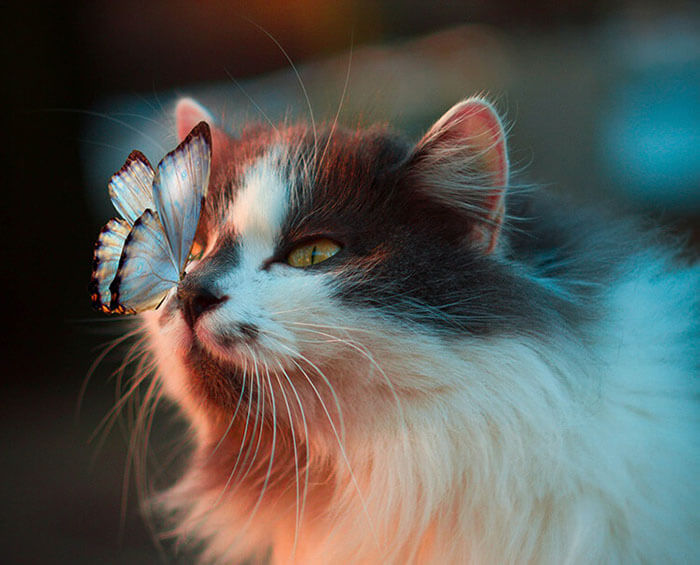

Bizarre Behavior
Cats are zany creatures. Whether it’s the way they give you a fixed stare, making you wonder if they can read your thoughts. Or how they dart across the room at seemingly super sonic speeds. We think cats have some pretty interesting behavior, so we gathered a few tidbits about their biology.
Why Behind the Weird
- Read on for eleven fun cat facts. And if you want to do an even deeper dive into the scientific theories of these cool facts about cats, check out this SciShow video. It gives thorough explanations of the why behind the weird.
- Why do cats’ eyes seem to glow in the dark? They have a special layer of eye tissue that acts like a mirror, amplifying light to be able to see in the dark. Sometimes this special feature results in reflecting light, making their eyes appear luminescent.
- There seems to be a trade-off on whether a cat can purr or roar. Meaning certain big cats like lions, tigers, leopards and jaguars can roar but they can’t purr. It has to do with the anatomy in their necks and throats.
- Does it ever look like your cat is giving you the stink eye? They might just be making that face to take in smells from the air. They have a special organ above their front teeth that helps them pick up on odors.
- What is it about catnip that drives your feline friend wild? Scientists think catnip mimics pheromones, naturally-occurring chemicals that affect behavior and physiology.
- You might have felt your cat kneading you like bread dough. Turns out this is behavior that stuck around from being a kitten. Baby cats paw at the mama’s belly to produce more milk.
- Boxes are a cat’s best friend. And there’s an explanation for that. Hiding in a box makes a cat feel less vulnerable and lowers their stress levels. Also, cats prefer warmer temperatures and they can build up more heat while inside the box.
- Most cats have twelve whiskers. The configuration varies by breed, but usually there are four rows of three on each cheek. Nerve endings and blood vessels are dense in the area around cats’ whiskers. This makes whiskers way more sensitive than regular fur.
- Whiskers offer input about the fancy word called “proprioceptors.” That means whiskers send information to the brain about the position of the cat’s body and limbs.
- Domestic cats can walk with their tail in a vertical position, but wild cats can’t. Wild cats can only walk with their tail tucked in or in a horizontal position.
- When a cat sticks its tail up in the air around another cat, it’s an invitation to smell each other and start the introduction process. Interesting way to meet and greet, huh?
So next time you’re watching your cat do something inexplicable, maybe you’ll have a better idea of just where that behavior originates.
